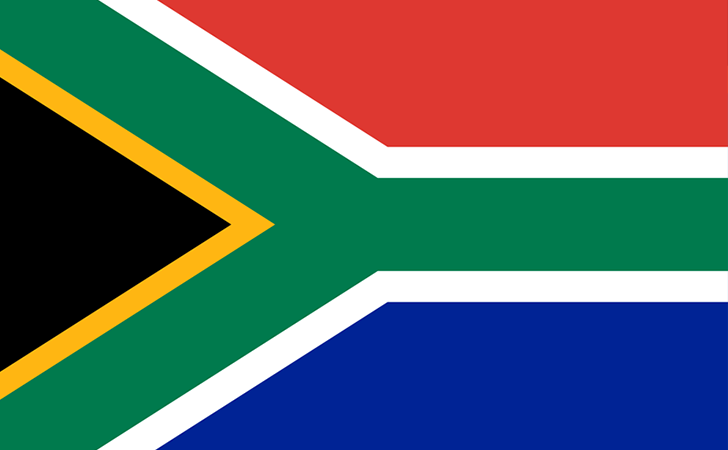South Africa Flag -The two significant European populaces in South Africa, the Dutch (presently Afrikaners) and the English, brought banners whose utilization persevered until 1994. The orange-white-blue tricolor of the seventeenth century Netherlands was the reason for the national banner authoritatively raised on May 31, 1928, by the Union of South Africa. The British Union Jack and the banners of the Transvaal and Orange Free State were added to the focal point of that banner. Missing was any image for the larger part of the populace, dark Africans, or for the nation's Colored (blended race) and Indian occupants.

The finish of the politically-sanctioned racial segregation time was set apart by the general testimonial fair appointment of April 1994, which brought about a solid triumph for supporters of the African National Congress (ANC). Numerous whites had expected that the dark green-yellow even tricolor of the ANC, speaking to dark Africans, the land, and mineral riches, would be made the national banner. Rather, the new banner raised on April 27 was a trade off in structure and hues planned to speak to and console all sections of the populace. Planned by state envoy Frederick Brownell, it has as its primary image a Y-shape representing the "joining of ways… combining history and present political real factors" into a typical assurance to make an assembled and prosperous future.
The new banner is special in consolidating six hues; customary banners had a few hues, and some cutting edge banners four or five hues. The banner hues could be identified with different gatherings—red-white-blue for English individuals and Afrikaners, green for Muslims, dark green-yellow for ANC supporters, red-white-dark green-yellow for Zulus,

The finish of the politically-sanctioned racial segregation time was set apart by the general testimonial fair appointment of April 1994, which brought about a solid triumph for supporters of the African National Congress (ANC). Numerous whites had expected that the dark green-yellow even tricolor of the ANC, speaking to dark Africans, the land, and mineral riches, would be made the national banner. Rather, the new banner raised on April 27 was a trade off in structure and hues planned to speak to and console all sections of the populace. Planned by state envoy Frederick Brownell, it has as its primary image a Y-shape representing the "joining of ways… combining history and present political real factors" into a typical assurance to make an assembled and prosperous future.
The new banner is special in consolidating six hues; customary banners had a few hues, and some cutting edge banners four or five hues. The banner hues could be identified with different gatherings—red-white-blue for English individuals and Afrikaners, green for Muslims, dark green-yellow for ANC supporters, red-white-dark green-yellow for Zulus,
Comments
Post a Comment